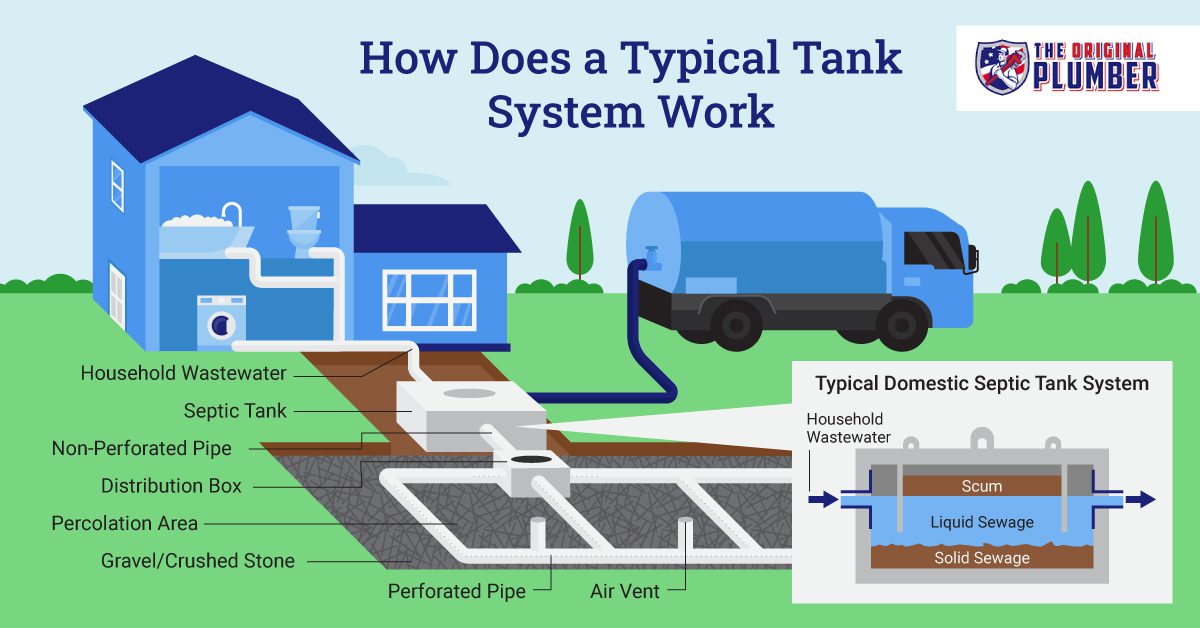Pumping Septic Service: Crucial Look After Your System
Wiki Article
Septic Container Solutions Unraveled: From Setup to Maintenance-- Your Total Overview
Are you struggling to recognize the ins and outs of septic system services? Look no even more-- this total overview will untangle every little thing for you. From installation to upkeep, we'll stroll you via the procedure step by action. Discover the crucial equipment needed for correct maintenance and the indications of potential issues to look out for. And also, we'll even share some useful do it yourself pointers to maintain your septic tank running efficiently. Get ready to end up being a sewage-disposal tank specialist!Septic System Installment Refine
When setting up a septic tank, you will require to very carefully excavate a hole in the ground. Before you begin digging, it is vital to situate below ground energies and obtain any type of necessary permits. Make use of an excavator or a backhoe to dig a hole that is deep and broad sufficient to accommodate the dimension of your septic container. Make sure to follow the producer's directions for the details dimensions.

After the base is prepared, carefully reduced the sewage-disposal tank right into the opening making use of a crane or various other lifting devices. Ensure to position the tank correctly according to the design plans and regional laws. Once the container is in location, backfill the opening with soil, making certain to portable it in layers to avoid settling.
Lastly, attach the inlet and outlet pipes to the sewage-disposal tank, making certain correct positioning and tight seals. When connecting the pipelines., it is essential to comply with regional pipes codes and regulations.
Important Tools for Sewage-disposal Tank Maintenance
One of the most vital items of devices is a septic container pump. A septic tank treatment item can be utilized to keep the wellness of the bacteria in the container. By having these necessary devices, you can ensure the proper upkeep of your septic tank and extend its lifespan.Regular Septic System Pumping Set Up
To preserve the health and wellness and effectiveness of your sewage-disposal tank, it is necessary to develop a routine pumping schedule. Routine pumping helps prevent the build-up of strong waste and ensures the proper functioning of your septic tank. The frequency at which you need to pump your septic container depends upon various aspects, including the dimension of your storage tank, the number of people in your house, and your water usage.As a basic guideline, it is recommended to have your septic system pumped every 3 to five years. It is vital to check your storage tank's condition consistently and readjust the pumping timetable as necessary. If you discover any indications of a complete storage tank, such as sluggish drains, smells, or sewer backups, it is essential to have your container pumped right away.
Along with routine pumping, appropriate maintenance and care are necessary to extend the lifespan of your septic tank. Avoid purging non-biodegradable things, such as diapers, paper towels, or grease, away. These can clog your system and cause expensive repairs.
Indications of Sewage-disposal Tank Issues to Look Out For

Do It Yourself Tips for Septic Tank Maintenance
Take aggressive steps to keep your septic tank by routinely pumping it. As a general regulation, it is suggested to pump your septic tank every three to 5 years. An additional vital DIY pointer for browse around here septic storage tank upkeep is to be conscious of what goes down your drains.

Final Thought
Regular pumping, viewing out for signs of problems, and adhering to Do it yourself ideas can aid you maintain your septic storage tank in good condition. Remember, appropriate maintenance is key to stay clear of costly repair work and keep your septic storage tank running smoothly.A septic storage tank treatment product can be used to keep the health and wellness of the germs in the storage tank.To maintain the wellness and effectiveness of your septic tank, it is vital to establish a normal pumping routine. The regularity at which you should pump your septic read here container depends on numerous elements, including the size of your storage tank, the number of people in your household, and your water usage.
If you see any type of signs of a complete container, such as slow-moving drains, smells, or sewage backups, it is important to have your tank pumped instantly. - septic service
Normal pumping, viewing out for indications of concerns, and complying with DIY ideas can aid you maintain your septic tank in great condition.
Report this wiki page